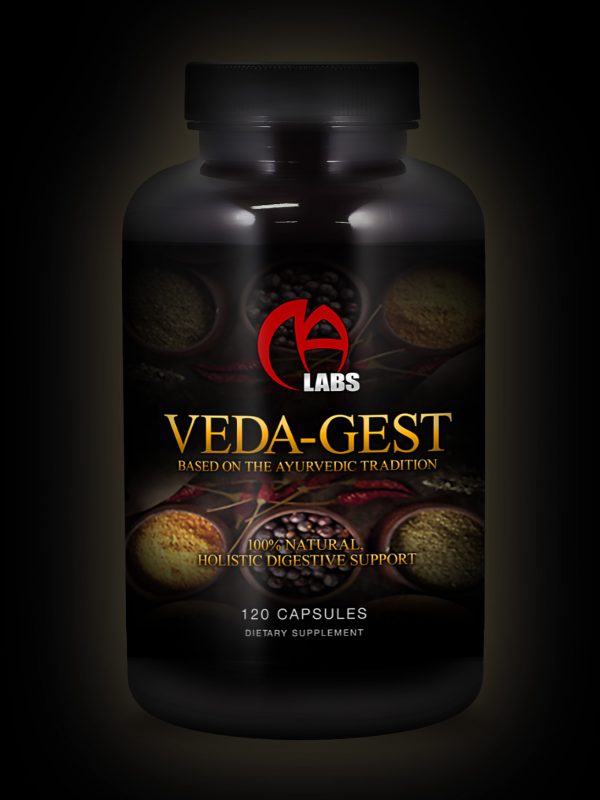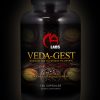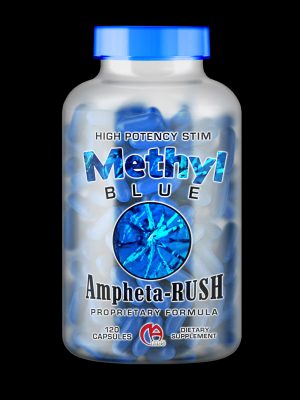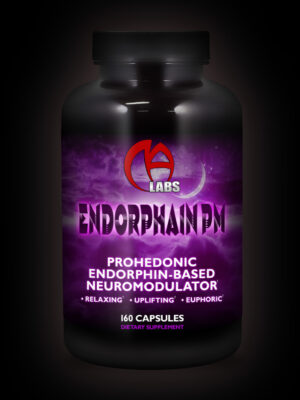Description
Veda-Gest
Based on the Ayurvedic Tradition
“Holistic, 100% Natural Digestive Support”
Veda-Gest at a Glance…
- Improves Overall Digestive Health & Function
- Enhances Nutrient Absorption
- Reduces Gas & Bloating
- Improves Digestive Motility
- Relieves Constipation
- Prevents/Reduces Acid-Reflux
- Improves IBS Symptoms
- Provides Anti-ulcerative Effects
- Demonstrates Anti-emetic Activity (nausea and vomiting)
- Assists with the Removal of Gastrointestinal Toxins and other Metabolic Waste Products
- Balances Intestinal Flora for a Healthy Gut Microbiome
- Improves Appetite
- Reduces Gastrointestinal Inflammation
- Stimulates Gastric and Intestinal Mucosal Secretion
- Protects and Heals the Stomach and Intestinal Lining
- Can Help Treat/Minimize Food Allergies
- Decreases Stomach Distension
- Promotes a State of Well Being
What is Ayurveda?
If you’re like most people, you’ve probably seen the term “Ayurveda/Ayurvedic” used in various contextual settings throughout modern literature, but are likely only vaguely familiar with its true meaning. Ayurveda, which means life science/knowledge (Ayur = life, Veda = science or knowledge) is an ancient Indian-Hindu system of medicine dating back at least 5,000 years and remains one of the most powerful, comprehensive, and sophisticated systems of medicine in the world.
In fact, Ayurveda was so far ahead of its time that Western medicine has only recently began to catch up, with literally 1,000’s of research studies and clinical trials having proven the wealth of information this vast body of medicine contains. In many ways, this unveiling brought with it a sense of both wonder and bewilderment, as it was previously believed that much of the information contained therein wasn’t known until modern times. In the same way that archeological researchers can’t figure out how the ancient Sumerians possessed advanced knowledge of the Earth and solar system (knowledge that can only be gleaned though satellite imagery), so too did these ancient Indian sages possess knowledge that couldn’t have been known without advanced medical technology and insight. Yet, they did, and even today Western medicine continues to turn to Ayurveda for clues on how to treat the various health maladies we now face.
Both advanced and simplistic in its approach, Ayurvedic medicine employs a nature-based method of treating disease/improving health, while relying on precise combinations of natural substances (often painstakingly prepared) suitable for providing the desired effect. One of the major areas of health Ayurveda addresses is digestive health, and it is from this body of knowledge that Veda-Gest was inspired.
Optimizing Digestion—One of the most important and neglected aspects of the bodybuilding endeavor
As bodybuilders/strength athletes, we place great emphasis on the foods we put into our body, and for good reason, as our ability to achieve our goals is directly dependent on our nutritional practices. While food selection is no doubt critical, being able to properly digest, absorb and eliminate our food is equally important. After all, if we can’t properly digest the food we eat, we can’t properly absorb it and if we can’t properly absorb it, the cells of our body cannot benefit from the nutrients it contains.
While nutrient absorption is a commonly considered and obviously vital component of the digestive process, motility (the rate and efficiency with which food moves through the digestive tract) and elimination (the excretion of waste from the body) are typically given much less attention. This is unfortunate, as both of these play an important role in governing not only recovery and growth, but in determining our overall aesthetic appeal.
In regards to the later, the connection is obvious, as food held in the digestive tract directly contributes to distension. In fact, I would go so far as to say (and I’ve said it many times before) that food induced distension (not drug use) is the #1 cause of distension among today’s bodybuilders/strength athletes. The body just isn’t equipped to process and eliminate such a large volume of food without some degree of back-up occurring.
Before the 1st meal can even be processed and eliminated, we are already putting another meal down our throats…and another one…and another one…and another one, etc. By the time the day is over, we have 5-6 meals sitting in our gut, which is why most of us look like we have a turtle shell hiding underneath our shirts by nightfall. Therefore, anything we can do to speed up the rate at which food is processed and eliminated, the less distended we will be and the better we will look…and remember, distension isn’t just a temporary matter. Once we stretch our stomach wall through repeated high-volume eating, it does not easily revert back to its original state.
We must also consider the issue of digestive waste build-up; a major risk factor associated with impaired motility/elimination. Digestive waste build-up occurs when food sticks to and hardens along the walls of the digestive tract (a situation exacerbated by deficient fiber intake, which is common in bodybuilders/strength athletes). This decreases the absorptive surface of the intestinal wall, diminishing our ability to absorb nutrients into the bloodstream. It also increases the risk of developing autotoxicity, or self-poisoning; a state in which uneliminated digestive waste begins to rot and decay within the gut. This produces harmful toxins which leach into the bloodstream, causing a whole host of potential health issues. Needless to say, this isn’t exactly beneficial for muscle growth or performance.
Elimination rate also dictates—to a significant degree—the rate at which our digestive system operates as a whole. Simply stated, if elimination slows down, everything else slows down with it. Fortunately, Veda-Gest contains the correct ingredients at the dosages needed to drastically speed up both digestive motility and elimination rate.
At this point you may be thinking to yourself “OK, I understand that, but I don’t have any serious digestive issues, so doesn’t that mean that my digestive system is already capable of properly digesting the food I eat?’ To that I would say “If by properly you mean optimally, then the answer is a resounding NO”. You see, many bodybuilders/strength athletes routinely consume two or even three times as much food as a non-trainer of comparative skeletal size, thereby placing much greater demands on their digestive system than the average individual.
This problem is compounded by the fact that the digestive system’s ability to adapt to increased food intake is much more limited in comparison to the muscular system’s ability to adapt to progressive resistance training. In other words, while you may be carrying significantly more muscular bodyweight than when you first began training (therefore requiring a much greater food intake), your digestive capacity remains relatively unaltered from that of your pre-training state. As a result, the digestive system is constantly working in overdrive, desperately trying to keep up with digesting, absorbing, and eliminating the massive quantity of food it is bombarded with on a daily basis.
Unfortunately, despite our body’s most sincere efforts, it just isn’t capable of fully conforming to these increased demands. Is it any wonder then that bodybuilders/strength athletes are constantly showing signs of digestive distress, with maladies such as stomach digestion, bloating, gas, and feelings of general malaise being a common occurrence?
The bottom line is that as bodybuilders/strength athletes, augmenting digestive function is one of the most important things we could ever do, and it goes far beyond simply being able to nourish our cells. Comprehensive digestive support encompasses the optimization of dozens of different processes, and as you will soon learn, they all contribute, in one way or another, to the accomplishment of our goals.
The Importance of Comprehensive Digestive Support
In today’s market, most digestive products are aimed at treating one or maybe two aspects of the digestive process. While this is certainly better than nothing, the digestive system is a massively complex structure consisting of over a half-dozen organ systems, each of which is interconnected and dependent on the other in order to accomplish the primary goal of digestion, absorption, and elimination. If any of the functions these organ systems provide are compromised, one or more aspects of the digestive process will suffer, not only impairing our ability to utilize the nutrients we consume for recovery and growth, but adversely impacting our immune system and overall health.
Most digestive products today are either digestive enzyme-based, probiotic-based, or fiber-based. While potentially helpful, they are limited from a functionality standpoint, both in terms of the number of organs systems they support, as well as in the number of functions they provide. Therefore, if an individual is using one of these products, but it doesn’t target the underlying issue, they may walk away believing that all digestive aides are nothing more than gimmicks.
In addition to being a one-trick pony, many of these products can also cause the individual to become reliant on them, such as digestive enzymes, which suppress endogenous enzyme secretion. In the end, rather than fixing the underlying problem (i.e. inadequate pancreatic enzyme secretion), it only makes the problem worse. This type of approach, known as symptom management, provides a temporary solution to a long-term problem, ultimately leaving the individual dependent on the product for life.
Veda-Gest is far superior to these one-lane products, as it not only supports ALL aspects of the digestive process, but it provides the body with the tools it needs to correct digestive deficiencies at their root rather than focusing on symptom management. For example, rather than supplying an outside source of digestive enzymes (which, as previously stated, suppresses endogenous enzyme release), Veda-Gest stimulates the pancreas to secrete more of its own enzymes, leading to digestive self-sufficiency instead of covering up the problem. This is just one of numerous ways in which Veda-Gest addresses digestive health, the rest of which will be discussed shortly.
In the end, utilizing a natural holistic approach focused on core issue resolution not only provides superior overall results, but it does so without causing any harmful side effects.
The 6 Steps of Digestion
-
Ingestion
-
Mechanical Digestion
-
Chemical Digestion
-
Motility
-
Absorption
-
Elimination
Digestion entails 6 major steps, which includes ingestion, mechanical digestion, chemical digestion, motility, absorption and elimination. The first step of the digestive process, ingestion, takes place when we chew and swallow our food. While little attention is usually given to this aspect of digestion, it’s role should not be underestimated, as the proper mastication (e.g. chewing) of our food not only makes the stomach’s job easier by kickstarting mechanical digestion, but it begins the process of chemical digestion (via enzyme secretions within saliva) as well.
Mechanical Digestion is as simple as it sounds. It is the physical process of systematically breaking food down into smaller fragments and involves chewing (mouth), churning (stomach) and segmentation (small intestine).
A bit more complex than Mechanical Digestion, Chemical Digestion is the process of breaking down food through the actions of 3 different groups of chemicals agents. These agents include acids, enzymes, and bile.
Acids are released through gastric glands in the stomach and are responsible for creating a low pH environment (pH ~2) suitable for digestion. This helps to denature and break down the 3 major macromolecules (proteins, carbohydrates and fats) into a substance called chyme (a semi-fluid mass of partially digested food). The stomach then releases chyme into the small intestine at a rate of about 1 tsp every 30 seconds. As it does so, the pancreas simultaneously neutralizes the acidity of the chyme (raising it to a pH level of 7) by releasing alkaline compounds called bicarbonate ions.
As this partially digested food moves into the small intestine, both the pancreas and specialized cells lining the gut wall begin to release various digestive enzymes into the intestine (note: the stomach also releases digestive enzymes prior to chyme entering the small intestine). These enzymes are substrate specific—meaning each enzyme helps digest a particular food molecule. On a molecular level, digestive enzymes intiate a diverse range of biological reactions, helping to help to speed up the hydrolysis (breakdown) of food molecules into their most basic components.
While the pancreas and intestine do a fabulous job of breaking down most macronutrients, fats are more difficult and therefore require a little extra help from the liver in form of bile. While the liver is responsible for making bile, it is stored in the gallbladder and from there it is released into the small intestine via bile ducts. Once released, bile interacts with fat globules by dividing them into tiny droplets (a process known as emulsification). This increases the total surface area available for fats to interact with the lipase enzyme (an enzyme that helps digest fats).
Once the intestine completes the digestion process at a molecular level, the nutrients are absorbed through the gut wall and into the bloodstream for transport to the liver for detoxification. From there it travels to the rest of the body, where it can be used by our cells to power all the various bodily processes.
At this juncture I will briefly address the subject of digestive motility. Digestive motility, which is defined as the movements of the digestive system and the transit of the contents within it, is governed by nerves and muscles throughout the entire digestive tract. This includes the esophagus, stomach, small intestine, large intestine, and colon. When digestion occurs properly, food moves through the digestive tract unimpeded by rhythmic contractions called peristalsis. However, if any of the nerves or muscles controlling these organs do not function with their normal strength and/or coordination, all sorts of problems can develop, including gas, bloating, stomach distension, constipation, acid reflux, etc.
The final step in the digestive process is elimination and occurs when the food we’ve eaten (more accurately termed digestive waste, or feces) moves into the colon and finally the rectum before being expelled from the body. At this point the digestive process is basically complete, although water absorption will continue to occur as digestive waste sits in the colon.
The Damaging Effects of Impaired Digestion
The number of adverse effects that can occur as a result of digestive dysfunction are vast. They include: impaired nutrient breakdown, impaired nutrient absorption, gas, bloating, acid reflux, stomach distension, sluggish digestion, constipation, appetite suppression, stomach pain, nausea, auto-toxicity, weakened immune function, gut dysbiosis (i.e. excessive amounts of harmful bacteria), chronic inflammation, increased intestinal permeability (leaky gut syndrome), fatigue, malaise, damaged stomach and intestinal lining, ulcers, food allergies, increased risk of liver disease, increased risk of colon cancer, insulin resistance and more.
Benefits of Veda-Gest
Normally, addressing all these issues would require the individual to purchase at least a half-dozen different products, making digestive optimization a rather costly pursuit. The good news is that Veda-Gest addresses them all for a fraction of the cost, but don’t take my word for it. There are 100’s, if not 1,000+ research studies and clinical trials (scroll to the bottom of the article for a list of references) detailing the ability of these ingredients to enhance all the major steps of the digestive process, including the stimulation of saliva secretion, digestive enzyme secretion, gastric acid secretion, and bile secretion, while also improving intestinal motility, nutrient absorption and elimination.
Studies have also been conducted demonstrating the effectiveness of these compounds in combatting literally EVERY single type of digestive dysfunction discussed in this article—with a profoundly positive outcome. These benefits alone number in the dozens, making it the most comprehensive and cost-effective digestive support product on the market.
And you Thought the Benefits Ended There?
If the above-mentioned benefits aren’t enough, Veda-Gest also provides a slew of other important health benefits, including anti-lipidemic, anti-lipid peroxidative, anti-atherosclerotic, anti-bacterial, anti-carcinogenic, anti-inflammatory, anti-hyperglycemic, anti-oxidative, hepatoprotective, immunomodulatory, blood pressure lowering and insulin sensitizing effects, as well as many others.
10 Years in the Making
On a personal note, I have struggled with digestive maladies for over a decade, making it extremely difficult to consume and digest the quantities of food necessary for maximizing recovery and growth. Over a 10+ year period I have experimented with virtually every type of digestive aide available (digestive enzymes, fiber supplements, pre and pro-biotics, etc.) before finally gravitating towards Ayurveda at the advice of a friend. Initially, I scoffed (internally, that is) at his recommendation, but after having tried all the modern cures with mediocre success, I finally decided to give it a go.
Immediately I experienced positive results, but it took about 2 years of experimenting with numerous combinations of ingredients before I finally settled on a combination that provided the most diverse number of benefits. Then, one day I thought to myself “instead of continuing to buy 5 different products, why not just make my own product and put them all in one bottle?”. After having experienced so many positive changes with this combination I wanted others to have the same opportunity, but even if you don’t have any serious digestive disorders, the benefits you stand to gain as a bodybuilder/strength athlete are tremendous. It just doesn’t make any sense to put so much effort into one’s diet, yet do nothing to ensure that we are able to reap its full benefits.
So, whatever your reason for considering Veda-Gest, I can assure you that no other digestive product comes close to providing the diverse number of benefits Veda-Gest does. As always, thank you for your continued support and have a great day! –Mike Arnold
REFERENCES:
https://www.ncbi.nlm.nih.gov/pubmed/23612703
https://www.ncbi.nlm.nih.gov/books/NBK92775/
https://www.ncbi.nlm.nih.gov/pubmed/8221023
https://www.ncbi.nlm.nih.gov/pmc/articles/PMC3665023/
https://www.ncbi.nlm.nih.gov/pubmed/19367122
https://www.ncbi.nlm.nih.gov/pubmed/14980006
https://www.ncbi.nlm.nih.gov/pubmed/24559810
https://www.ncbi.nlm.nih.gov/pmc/articles/PMC3016669/
https://www.ncbi.nlm.nih.gov/pubmed/21918995
https://www.ncbi.nlm.nih.gov/pubmed/20178671
https://www.ncbi.nlm.nih.gov/pubmed/20178671
https://www.ncbi.nlm.nih.gov/pubmed/12492454
https://scialert.net/fulltext/?doi=ijp.2013.182.189
https://www.ncbi.nlm.nih.gov/pubmed/12868253
https://www.ncbi.nlm.nih.gov/pubmed/10812814
https://scialert.net/fulltext/?doi=jbs.2017.312.319
https://www.ncbi.nlm.nih.gov/pubmed/18976688
https://www.ncbi.nlm.nih.gov/pmc/articles/PMC4137549/
https://www.ncbi.nlm.nih.gov/pubmed/22010973
https://www.ncbi.nlm.nih.gov/pmc/articles/PMC2874511/
https://www.ncbi.nlm.nih.gov/pmc/articles/PMC3990147/
https://www.ncbi.nlm.nih.gov/pmc/articles/PMC5065707/
https://www.ncbi.nlm.nih.gov/pmc/articles/PMC5147708/
https://www.ncbi.nlm.nih.gov/pubmed/25456022
https://www.ncbi.nlm.nih.gov/pubmed/15087270
https://www.ncbi.nlm.nih.gov/pmc/articles/PMC4039583/
https://www.ncbi.nlm.nih.gov/pubmed/26310198
https://www.ncbi.nlm.nih.gov/pubmed/14653829
https://www.ncbi.nlm.nih.gov/pmc/articles/PMC4411465/
https://www.ncbi.nlm.nih.gov/pubmed/20591206
https://www.ncbi.nlm.nih.gov/pubmed/12211745
https://www.ncbi.nlm.nih.gov/pubmed/22183827
https://www.ncbi.nlm.nih.gov/pubmed/23195882
https://www.ncbi.nlm.nih.gov/pubmed/20118544
https://www.ncbi.nlm.nih.gov/pmc/articles/PMC5622760/
https://www.ncbi.nlm.nih.gov/pmc/articles/PMC4295613/
https://www.ncbi.nlm.nih.gov/pubmed/29433220
https://www.ncbi.nlm.nih.gov/pubmed/25050023
https://www.ncbi.nlm.nih.gov/pubmed/30845182
https://www.ncbi.nlm.nih.gov/pmc/articles/PMC4075695/
https://www.ncbi.nlm.nih.gov/pubmed/21783688
https://www.ncbi.nlm.nih.gov/pubmed/19146935
https://www.ncbi.nlm.nih.gov/pubmed/16868824
http://www.scopemed.org/?mno=2637
https://www.ncbi.nlm.nih.gov/pubmed/18831331
https://www.ncbi.nlm.nih.gov/pubmed/21718774
https://www.ncbi.nlm.nih.gov/pubmed/27776428
https://www.ncbi.nlm.nih.gov/pubmed/12577586
https://www.ncbi.nlm.nih.gov/pubmed/10702999
https://www.ncbi.nlm.nih.gov/pubmed/10702999
http://cdn.intechweb.org/pdfs/22957.pdf
http://europepmc.org/articles/pmc3178942
https://www.ncbi.nlm.nih.gov/pubmed/14727769
https://www.ncbi.nlm.nih.gov/pubmed/14727769
https://www.ncbi.nlm.nih.gov/pubmed/14727769
https://www.ncbi.nlm.nih.gov/pubmed/17987447
https://www.ncbi.nlm.nih.gov/pubmed/22736065
https://www.ncbi.nlm.nih.gov/pubmed/20828313







